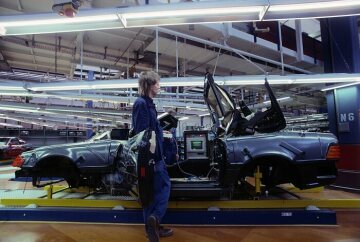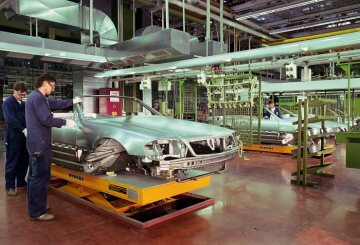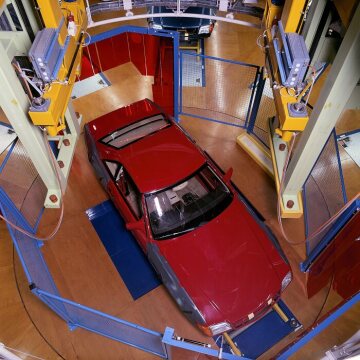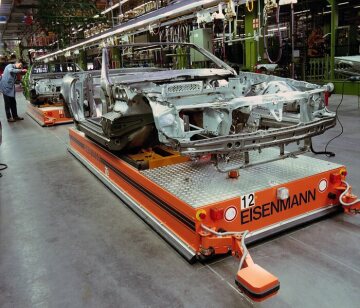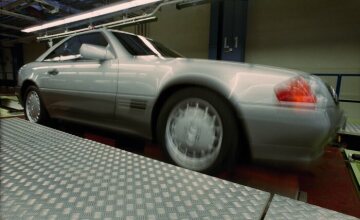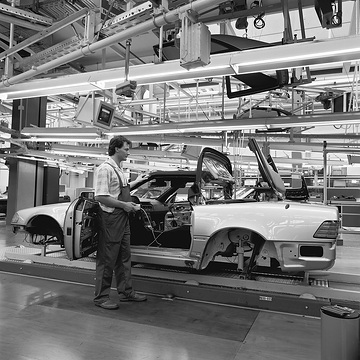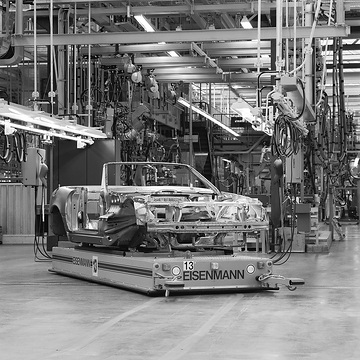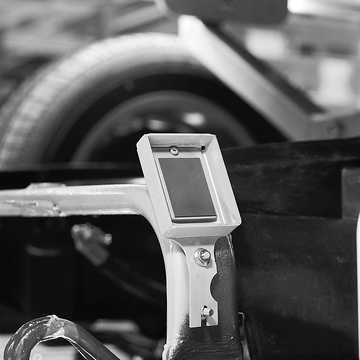Delete
Do you really want to delete the data record?
Download
Please wait a moment ...
Download
Please wait a moment ...
Download
Please wait a moment ...
Crop for shopping cart
Please wait a moment ...
Set as main picture
Do you want to set this media object as main picture?
-
Caption
:
Special welding stations and robots are the basis for maximum precision and production consistency in the bodyshop of the Mercedes SL. Nevertheless, in accordance with Mercedes-Benz's quality standards, the results of the individual stations are constantly monitored. This is done between the individual stations both automatically with measuring machines and manually with measuring gauges. The 3D measuring machine in the image compares entire bodies or only individual assembly stages with the associated stored data record. The measurement results allow conclusions to be drawn immediately about the dimensional accuracy of the production equipment in order to make any corrections before tolerance limits are reached.
-
Info
:
Press kit 1989
-
Caption
:
The installation of the electrohydraulic soft top on the Mercedes SL requires the most meticulous care. Before the roadsters are forwarded to the next assembly station, the employees check every last detail with the help of a computer. The computer provides the test program on a screen, which is "processed" step by step. If deviations from the specifications occur in one of the test steps, the roadster cannot leave the station until the offending detail function is also in order. Of course, the soft top hydraulics are already checked at two stations before installation. Equally thorough quality checks are carried out beforehand in the textile area, where the soft top cover is manufactured and the frame is covered.
-
Info
:
Press kit 1989
-
Caption
:
The test run is the final stage before the completed convertible leaves the assembly. The vibration test stand is a world innovation in the test area; the running gear is placed on it. A condition is thus reached which is otherwise only achieved after 1000 km. The dynamic operation of the new adaptive damping system (ADS) is also included in the computer-controlled testing. Information on which special test programmes must run is taken by the computer from the micro-chip which accompanies the car through the entire production process and contains all individual data.
-
Info
:
Press kit 1989
-
Caption
:
The body shell of the Mercedes SL is manufactured in various stages. Transport to the individual stations is carried out with driverless systems, and the bodywork rests on a simple transport frame. Within the manufacture stations, the body shell is, however, fully raised from the transport frame and fixed to the station by a new locating and fixing structure. In tradtitional manufacture processes transport frames generally serve as fixing elements; however, they would not be adequate for the optimal dimensional accuracy required by a convertible of the quality of the SL.
-
Info
:
Press kit 1989
-
Caption
:
Special welding stations and robots are the basis for maximum precision and production consistency in the bodyshop of the Mercedes SL. Nevertheless, in accordance with Mercedes-Benz's quality standards, the results of the individual stations are constantly monitored. This is done between the individual stations both automatically with measuring machines and manually with measuring gauges. The picture shows the manual check of the particularly tightly toleranced soft top area before the bodies leave the bodyshell. The soft top area is particularly "sensitive to dimensions"; the tolerance limits lie within tenths of a millimeter. This test with the measuring gauge ensures that only absolutely fault-free bodies are delivered to the following areas.
-
Info
:
Press kit 1989
-
Caption
:
Flexibility and precision as the primary objective also apply to the assembly area, which is predominantly characterized by manual work. Here - tailor-made for the Mercedes SL - a globally unique solution was found. Soft top hydraulics, cable harnesses and soft top are assembled in three "assembly stars" arranged one behind the other. The individual boxes of each "assembly star" are grouped in a circle around a kind of elevator that brings the bodies from the upper floor and transports them on after assembly. The vehicle can remain in the individual boxes for up to 1.5 hours. The employees check the results of their work themselves using computer-aided testing equipment and can immediately rectify any problems themselves. The picture shows the hydraulic assembly line, where the soft top hydraulics, roll bar, heating or air conditioning system and the locking system are installed.
-
Info
:
Press kit 1989
-
Caption
:
Mercedes-Benz is using a new identifikation system in the prodcution sequence for the new SL. Each body shell carries a micro-chip on the radiator cross-member, which has been programmed with all individual data of the car, and is independently connected with the stations. The robot used in the body shell section is thus informed, for example, of how many bolts must be welded in accordance with the ordered optional fittings. More bolts must be used for cars with ASR or the new adaptive damping system (ADS) to fasten the additional cables and ducts than for a standard production car.
-
Info
:
Press kit 1989

Loading




